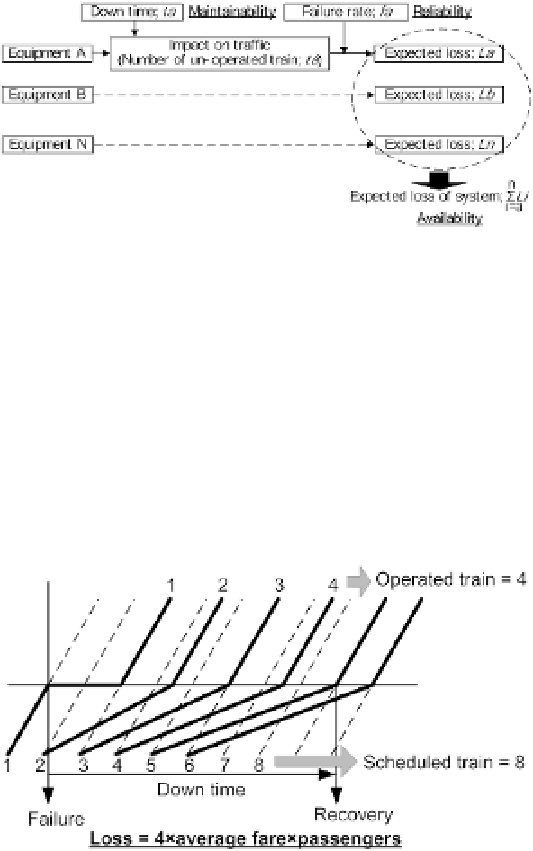Information Technology Reference
In-Depth Information
3.2
Method to Estimate the Loss Caused by Failures
The basic procedure is illustrated in Fig.1. We consider the signalling sys-
tem in a single station. When an equipment (e.g., signal, track circuit, point
machine and interlocking device) fails, there are various types of impacts. In
some cases, the train cannot run at all, while in other cases the train can run
through the station via an alternative route. In the latter case, although a
train headway may be longer than usual, service suspension can be prevented.
These type of impact can be defined for each failure case in advance.
Fig. 1. A Basic Evaluation Procedure
In the first step, the number of trains which cannot be operated during
a failure is estimated for each equipment based on pre-defined conditions.
A duration of the failure is one of the conditions, and corresponds to an
indicator of maintainability. The loss of fare revenue caused by failure is
estimated from the difference between planned and actual operated number
of trains. The outline of estimating the loss of each case is shown in Fig.2.
Fig. 2. Outline of Estimating the Loss
In order to obtain the loss, we need to estimate the movement of trains
under various status of a train operation. The status during a failure depends

